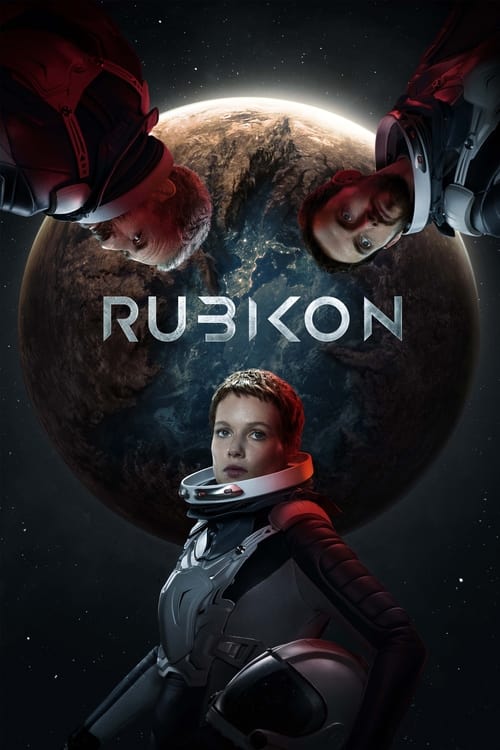
Ask Your Own Question
What is the plot?
What is the ending?
In the ending of "Generation Z - Da war ein Himmel," the main characters confront the consequences of their choices and the harsh realities of their lives. The film culminates in a poignant moment of realization and acceptance, leading to a bittersweet resolution for each character.
As the story unfolds in the final scenes, we find ourselves in a dimly lit room where the characters gather for one last confrontation. The atmosphere is thick with tension, as unresolved conflicts and emotions hang heavily in the air. The protagonist, a young woman named Mia, stands at the center, her face a mixture of determination and vulnerability. She has been grappling with her identity and the pressures of her generation throughout the film.
Scene by scene, the narrative progresses:
The first scene of the ending begins with Mia sitting on the edge of her bed, staring at her phone, the screen illuminating her face in the dark. She scrolls through messages from her friends, feeling the weight of their expectations and the isolation that comes with them. Her internal struggle is palpable; she wants to connect but feels increasingly alienated.
In the next scene, Mia meets with her close friend, Leo, in a café. The atmosphere is tense as they discuss their dreams and fears. Leo expresses his frustration with the world around them, feeling trapped in a cycle of despair. Mia listens intently, her heart aching for him, but she also feels a flicker of hope as she shares her own aspirations. This moment highlights their bond, but also the growing divide between their outlooks on life.
The following scene shifts to a party where the group of friends gathers, attempting to escape their problems through fleeting moments of joy. The music is loud, and the energy is chaotic. Mia watches as her friends indulge in reckless behavior, trying to mask their pain. She feels a sense of detachment, realizing that this façade cannot last. The camera captures her expression, a mix of longing and sadness, as she yearns for deeper connections.
As the night progresses, tensions rise, leading to a confrontation between Mia and another friend, Sarah. They argue about their differing perspectives on life and the future. Sarah, embodying the cynicism of their generation, lashes out, while Mia pleads for understanding and support. This emotional clash serves as a turning point, forcing both characters to confront their fears and insecurities.
In the climax of the film, the group gathers outside under a starry sky. The atmosphere shifts as they share their vulnerabilities, revealing their struggles with mental health, societal pressures, and the search for meaning. Mia takes a deep breath and speaks from the heart, urging her friends to embrace their true selves rather than conforming to societal expectations. The scene is charged with emotion, as tears are shed and apologies are exchanged.
The final moments of the film depict each character's resolution. Mia decides to pursue her passion for art, finding solace in creativity. Leo, inspired by Mia's courage, seeks help for his mental health struggles, taking the first step towards healing. Sarah, moved by the vulnerability of her friends, begins to reconsider her own outlook on life, hinting at a desire for change.
As the screen fades to black, the audience is left with a sense of hope and the understanding that while the journey is fraught with challenges, the bonds of friendship and the courage to be authentic can lead to personal growth and acceptance. Each character's fate reflects the film's exploration of the complexities of youth, the search for identity, and the importance of connection in a world that often feels overwhelming.
Is there a post-credit scene?
In the movie "Generation Z - Da war ein Himmel," there is no post-credit scene. The film concludes its narrative without any additional scenes or content after the credits roll. The story wraps up with a poignant resolution that encapsulates the themes of youth, identity, and the struggles faced by the characters throughout the film. The absence of a post-credit scene allows the audience to reflect on the journey of the characters and the overarching message of the film without any further distractions.
How do the supporting characters influence the protagonist's journey?
Supporting characters play crucial roles in shaping the protagonist's journey. Friends provide both support and conflict, while mentors offer guidance and wisdom. Each interaction reveals different facets of the protagonist's personality and highlights the importance of community in overcoming personal struggles.
How does the relationship between the protagonist and their family evolve during the film?
The protagonist's relationship with their family is strained at the beginning of the film, marked by misunderstandings and a lack of communication. As the story progresses, pivotal moments force the family to confront their issues, leading to emotional reconciliations that highlight the importance of support and understanding.
What challenges does the main character face in their journey throughout the film?
The main character, a young adult navigating the complexities of modern life, faces numerous challenges including societal pressures, personal identity struggles, and the impact of technology on relationships. These challenges manifest in various scenes where the character grapples with feelings of isolation and the need for connection.
What role does technology play in the characters' interactions and development?
Technology serves as both a tool and a barrier in the characters' lives. It facilitates connections through social media but also exacerbates feelings of loneliness and anxiety. Key scenes depict characters engaging with their devices, illustrating how their online personas often clash with their real-life emotions and relationships.
What significant events lead to the protagonist's turning point in the story?
The protagonist experiences a series of significant events, including a betrayal by a close friend and a moment of crisis that forces them to reevaluate their life choices. These events serve as catalysts for personal growth, pushing the character to confront their fears and ultimately seek a more authentic existence.
Is this family friendly?
"Generation Z - Da war ein Himmel" is a film that explores themes of youth, identity, and societal challenges. While it may appeal to a wide audience, there are several aspects that could be considered objectionable or upsetting for children or sensitive viewers:
-
Depictions of Mental Health Struggles: The film addresses issues related to anxiety, depression, and the pressures faced by young people, which may be distressing for some viewers.
-
Substance Use: There are scenes that involve the use of drugs or alcohol, which could be concerning for younger audiences.
-
Conflict and Violence: The narrative includes moments of conflict that may escalate to violence, portraying the struggles and frustrations of the characters.
-
Emotional Turmoil: Characters experience significant emotional distress, including feelings of isolation and despair, which may resonate deeply and be upsetting.
-
Social Issues: The film tackles heavy social themes such as bullying, peer pressure, and the impact of social media, which could be triggering for some viewers.
These elements contribute to the film's exploration of the complexities of growing up in a challenging environment, but they may not be suitable for all audiences, particularly younger children or those sensitive to such topics.





















